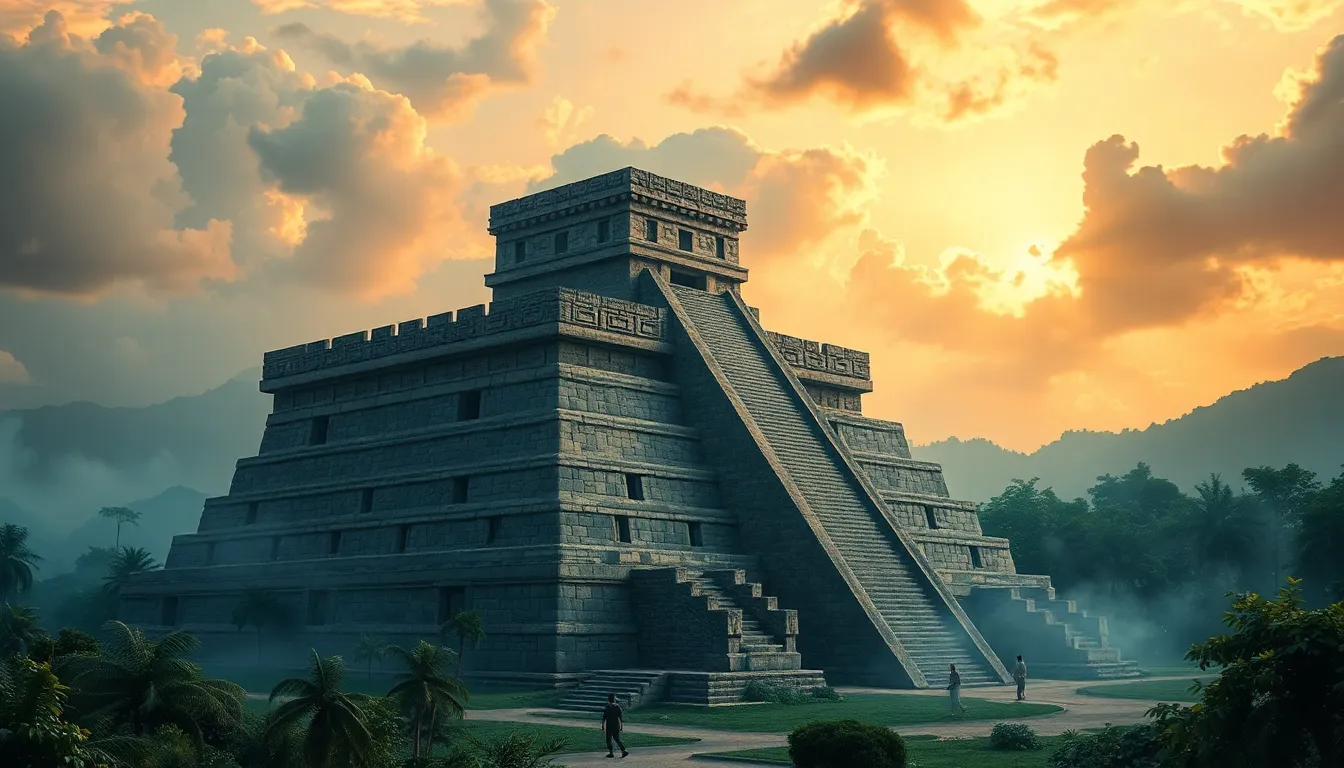The Myth of the Mayan Calendar: What Went Wrong?
I. Introduction
The Mayan Calendar is a fascinating aspect of ancient Mesoamerican culture, representing a complex system of timekeeping that reflects the Mayans’ deep understanding of astronomy and cyclical time. In Mayan society, the calendar was not merely a tool for tracking days but a significant cultural artifact that influenced religious ceremonies, agricultural practices, and social organization.
The significance of the calendar in Mayan culture cannot be overstated. It was integral to their cosmology and daily life, dictating important events and rituals. However, the calendar gained international attention leading up to December 21, 2012, when widespread predictions of an impending apocalypse captured the public’s imagination. This phenomenon was rooted in numerous misconceptions about the Mayan Calendar and its interpretations.
II. Understanding the Mayan Calendar
The Mayan Calendar comprises several interlocking systems, the most notable of which are the Long Count, Tzolk’in, and Haab’.
- Long Count Calendar: This is a linear calendar used to track longer periods, consisting of baktuns (approximately 394 years), katuns (20 years), tuns (360 days), uinals (20 days), and k’ins (1 day).
- Tzolk’in: A 260-day ritual calendar that combines 20 named days with 13 numbers, used primarily for religious and ceremonial purposes.
- Haab’: A 365-day solar calendar composed of 18 months of 20 days each, followed by a short month of 5 days.
The cyclical nature of time in Mayan belief is crucial to understanding their worldview. Unlike linear perceptions of time common in Western cultures, the Mayans viewed time as a series of cycles that could repeat, emphasizing the importance of both past and future events.
III. The 2012 Predictions and Popular Misinterpretations
The 2012 doomsday predictions originated from a misinterpretation of the Mayan Long Count calendar. Many believed that the end of a baktun cycle on December 21, 2012, signified an apocalyptic event, a notion that was largely propagated by sensationalist media.
The media portrayal of the 2012 phenomenon was rife with exaggerations and fearmongering, prompting widespread panic and speculation about natural disasters, planetary alignments, and even alien invasions. Key figures, including authors and filmmakers, contributed to this myth by presenting distorted views of Mayan beliefs.
IV. The Role of Archaeological Evidence
An examination of Mayan texts and inscriptions reveals little evidence supporting apocalyptic predictions. Scholars have noted that while December 21, 2012, marked a significant date, it was not imbued with the ominous implications that modern interpreters suggested.
Misinterpretations by both scholars and the public led to a misunderstanding of the calendar’s significance. The actual importance of the December 2012 date was more about a transition point in the calendar rather than an ending.
V. Cultural Appropriation and Misrepresentation
The impact of Western culture on the understanding of the Mayan calendar is profound. Many interpretations of the calendar have been influenced by a lack of respect for Mayan culture, leading to a distorted view that emphasizes sensationalism over accuracy.
Myths surrounding the Mayan calendar were amplified through popular culture, including movies, books, and the internet. This cultural appropriation not only misrepresented the Mayan civilization but also had real-world consequences for contemporary Mayan communities, who faced stigma and misunderstanding as a result.
VI. Scientific Perspectives on the Calendar and Predictions
Astronomical events, such as alignments and solstices, were often cited in discussions about the Mayan calendar. However, scientific reasoning debunks many of the doomsday predictions associated with December 2012. The alignment of celestial bodies does not dictate catastrophic events.
The importance of critical thinking in interpreting ancient cultures cannot be overstated. Understanding the context and purpose of the Mayan calendar is crucial to dispelling myths and appreciating its true significance.
VII. Psychological Factors Behind the Belief in the Myth
The belief in apocalyptic scenarios often stems from deep-seated fears and anxieties about the future. The allure of end-of-the-world predictions can be compelling, as they provide simplistic answers to complex problems.
Cognitive biases, such as confirmation bias and the tendency to believe in conspiracy theories, also play a role in why people might cling to these myths. The psychological draw towards sensationalism often overshadows empirical evidence.
VIII. Lessons Learned from the 2012 Phenomenon
The 2012 phenomenon highlighted the importance of understanding cultural contexts when interpreting historical artifacts. It underscored the need for accurate historical education to prevent the spread of misinformation.
Furthermore, the implications for future predictions and myths are significant. A more respectful and informed approach can help mitigate the spread of similar misconceptions in the future.
IX. Legacy of the Mayan Calendar Myth
The ongoing interest in the Mayan civilization continues to thrive, with many drawn to its rich history and complex cultural practices. The influence of the Mayan calendar extends into new age spirituality and alternative beliefs, often stripped of their original context.
In contemporary discussions about time and spirituality, the Mayan calendar serves as a potent symbol, representing both the allure of ancient wisdom and the pitfalls of misinterpretation.
X. Conclusion
In summary, the myth of the Mayan calendar and the 2012 phenomenon serves as a cautionary tale about the dangers of cultural misinterpretation and sensationalism. Understanding the true significance of the Mayan calendar requires a respectful approach to its cultural context and history.
Reflecting on this phenomenon emphasizes the importance of accurate historical education and the value of critical thinking in interpreting ancient cultures. The enduring fascination with the Mayan calendar reminds us of our shared human curiosity about time, existence, and the mysteries of the universe.




